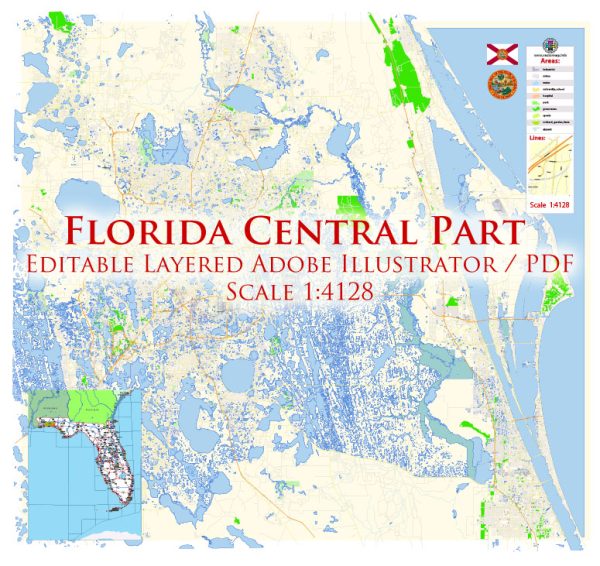Central Orlando, located in the heart of Florida, has a rich history of urban development that spans several decades. The area has undergone significant transformations, evolving from a small, citrus-centric town to a vibrant urban center. Here is an overview of the key stages in the urban development of Central Orlando:
- Early Settlement and Citrus Industry (19th Century):
- In the 19th century, Central Florida, including what is now Orlando, was primarily agricultural and known for its citrus industry.
- Orlando was incorporated as a city in 1885, and its early economy was driven by citrus groves and cattle ranching.
- Railroad Expansion (Late 19th Century):
- The arrival of the South Florida Railroad in 1880 played a crucial role in Orlando’s development, facilitating transportation of goods and people.
- The railroad contributed to the growth of the city, making it a more accessible and attractive destination for settlers.
- Boom and Bust (1920s):
- The Florida Land Boom in the 1920s led to rapid population growth and real estate development in Orlando.
- However, the Great Depression in the late 1920s and early 1930s caused a collapse in the real estate market, leading to economic challenges for the region.
- Post-World War II Growth (1940s-1950s):
- After World War II, Orlando experienced a period of growth and expansion, fueled by the construction of military training facilities and an increase in tourism.
- The opening of Walt Disney World in 1971 marked a major turning point, bringing a new era of tourism and economic development to Central Florida.
- Diversification and Urbanization (Late 20th Century):
- Orlando diversified its economy beyond agriculture and tourism. The city became a hub for technology, healthcare, and education.
- The construction of major highways, such as Interstate 4 and the Florida Turnpike, improved connectivity and further stimulated growth.
- Downtown Redevelopment (Late 20th Century – Present):
- In the late 20th century and continuing into the 21st century, there has been a concerted effort to revitalize downtown Orlando.
- Projects like the Orlando Magic’s Amway Center, the Dr. Phillips Center for the Performing Arts, and the redevelopment of Lake Eola Park have transformed the downtown area.
- Cultural and Entertainment Hub (Present):
- Central Orlando has become a cultural and entertainment hub, with a thriving arts scene, diverse dining options, and a range of recreational activities.
- The city continues to attract residents, businesses, and tourists, contributing to its dynamic and evolving urban landscape.
Overall, the history of Central Orlando’s urban development reflects a journey from a modest agricultural town to a bustling, diversified metropolis with a focus on technology, tourism, and cultural vibrancy. The city’s growth and evolution continue to shape its identity and contribute to its significance on the Florida map.


 Author: Kirill Shrayber, Ph.D.
Author: Kirill Shrayber, Ph.D.